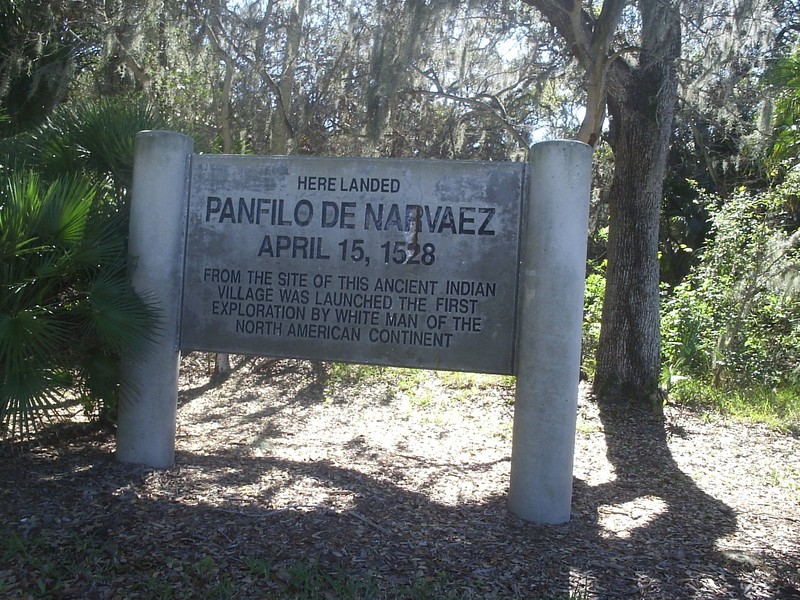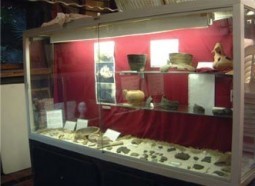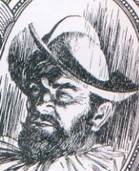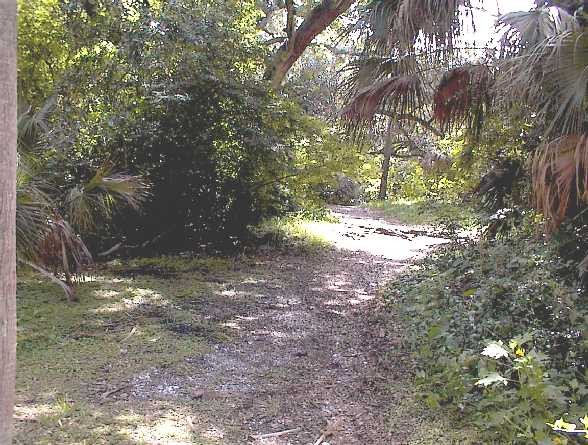Jungle Prada Site
Introduction
Text-to-speech Audio
This archaeological site in St. Petersburg is home to a small collection of Native American burial mounds. In the 16th century, this site was home to a large community that was nearly completed eliminated following the spread of infectious disease that resulted from the arrival of Spanish Conquistadors. It was added to the National Register of Historic Places in 2003.
Images
Marker indicating where Narvaez landed

Native American artifacts found at the site

Pánfilo de Narváez

A trail that runs through Jungle Prada with an Indian Mound off to the side

Backstory and Context
Text-to-speech Audio
In 1526, after Hernan Cortes had toppled the Aztec Empire, King Charles I of Spain ordered Panfilo de Narvaez to lead an expedition into what is now Florida. Cortes' mission was to search for gold and powerful civilizations like the empires of Mexico and South America. On June 17th, 1527, Narvaez and 600 men sailed from Spain to the western coast of Florida, landing in what is now Tampa Bay in the April of 1528. By then his army had been weakened by storms on the high seas as well as desertion from his men.
Once they landed ashore, the conquistadors began their search. They were unable to find the mineral wealth they had hoped to find, and also lacked Native interpreters. As a result, they quickly ran out of provisions and resorted to eating their own horses. They also found themselves vulnerable to area tribes who suggested that the Spanish leave their territory.
With few supplies and increasing hostility by area Native American tribes, Narvaez led his men northwest towards the coast in hopes of abandoning the area. Unfortunately for the Spanish, their fleet had already left the area. Desperate to save his men, Narvaez and his crew built five rafts in hopes of crossing the Gulf and reaching the safety of Spanish settlements in Mexico. Narvaez and the majority of his crew drowned during the voyage when a storm hit. For the Native people of this section of Florida, the short-lived voyage was even more disastrous. The arrival of the Spanish introduced deadly new pathogens that ravaged the once-powerful tribes of the area.
The Jungle Prada site is privately owned, but open to the public. The site includes interpretive signs about the Native tribes who lived in the area before the Spanish colonized Florida. While there remains no evidence of the Spanish just like there is no English presence found at the Roanoke Colony, an account was written of the expedition by one of Narvaez’ captains, fellow conquistador Alvar Nuñez Cabeza de Vaca.
Cite This Entry
DeLeo, Charles et. al. "Jungle Prada Site." Clio: Your Guide to History. November 7, 2023. Accessed August 7, 2025. https://theclio.com/entry/23856
Sources
"Anderson-Narváez Mound at Jungle Prada Mound Park." Viva Florida. Accessed May 20, 2014. http://vivaflorida.org/Explore/Gardens-and-Parks/Anderson-Narvaez-Mound-at-Jungle-Prada-Mound-Park
"Panfilo de Navarez." Encyclopedia Britannica. Accessed June 23, 2016. http://www.britannica.com/biography/Panfilo-de-Narvaez.
Maura, Juan Francisco (2008) (in Spanish). "El Gran Burlador de Ámerica: Alvar Núñez Cabeza de Vaca". Parnaseo-Lemir. Valencia:Universidad de Valencia. "Pánfilo de Narváez".
Encyclopedia of World Biography. Vol. 11. 2nd ed. Detroit: Gale, 2004. Reséndez, Andrés (2007). A Land So Strange: The Epic Journey of Cabeza de Vaca. Basic Books, Perseus.
Schneider, Paul (2006). Brutal Journey: The Epic Story of the First Crossing of North America. Henry Holt.
